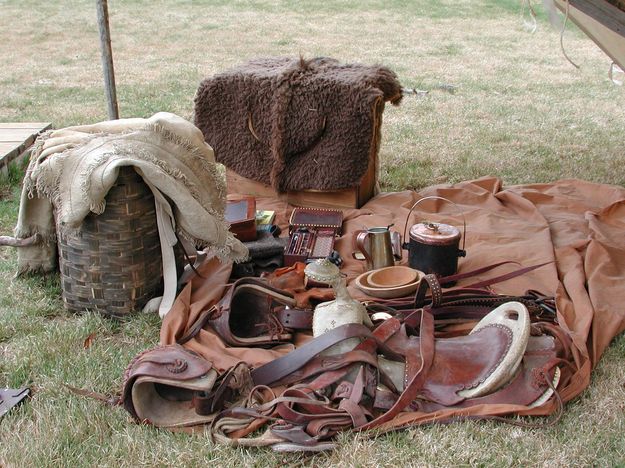Imagine, if you will. You have made the decision to move out into the wilderness with the intent of finding and making your fortune. What will you take to ensure your survival? What will you take to make our trip easier? Remember that whatever supplies you choose you will have to carry yourself or put onto a pack animal that brings its own needs. Whether you decide to bring an animal or strike it out alone, everything that you need to survive will either be found in the forests or bought from town. What would you choose?
Livestock was among the first choice for novice mountain men. The decision was based on many things; the first being if such a beast was already owned or if it had to be purchased. Pack animals such as horses and mules were advantageous because they enabled the mountain man to pack more provisions in and more furs out. The animals could also be ridden allowing for much more ground to be covered. These advantages came at a cost, however. Pack animals needed their own feed; roughage could be found along the trial but grains had to be brought along. These animals also could get sick or go lame, leaving the mountain man with enough gear for a mule but no mule to carry it.
Knives were always carried by anyone venturing out into the wilderness. They did not have the problems with reloading and unreliability the way that guns did and they were wildly useful for many tasks. Long knives were used for hunting and defense, smaller knives were used for skinning beavers and other fur bearing mammals and dull knives were used to strip the hides of their fat. Household knives were a forgotten luxury; due to their limited usefulness they were often left behind.
There was quite a bit of other gear that was brought along: flint and steel to make fire, simple lanterns and candles, pipes and tobacco, coffee pots, cups with plates, and personal items. These latter items varied greatly from man to man; some brought tin types of family members, others brought bibles and liquor. Each man put his own personality into his bags with his choices in gear.[1]

[1] Carl P. Russell, Firearms, Traps, and Tools of the Mountain Men: A Guide to the Equipment of the Trappers and Fur Traders Who Opened the Old West (n.p.: Skyhorse Publishing, 2010).
Gun Picture Credit: http://whitetailwoods.blogspot.com/2011_09_01_archive.html
Gear Picture Credit: http://www.pinedaleonline.com/news/2004/05/Mountainmangear.htm
No comments:
Post a Comment